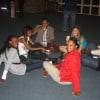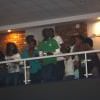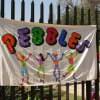Written by Ryan Strydom

Because Edward Cullen from the "Twilight" Series is the scariest Vampire you could meet.
Earlier this week was Halloween – when kids dress up as monsters and come to the door asking for sweeties. But should Christians be engaging in this whole ordeal? Why do we do it anyway? Does it all matter? And how can the event be used for the Gospel, if at all?
In the occult world, Halloween is one of the two great high days of the year.
Christopher Peppler, a South African theologian (many who have studied theology through SATS would have studied his notes) has written a blog about Halloween. He asks the same questions and provides the background to Halloween.
Halloween has its genesis in an ancient Celtic festival to honour the ‘lord of the dead’ , Samhain. The Celtic year began on the 1st November and on the last day of their year, 31st October, the spirits of the dead were said to return to their homes. To ward off these spirits the Celts used to perform rituals, sacrifice animals and humans and light bonfires on nearby hill tops. It was also a time when practitioners of the magic arts attempted to contact the dead and to divine the future because this day was seen as a ‘conjunction’ of the dark spirit world with our material world.
The early Roman Catholic church tried to ‘Christianise’ this ancient pagan festival by proclaiming 1st November as a festival for honouring the church saints. They called it ‘All saints day’ and referred to the night preceding it as the ‘hallowed eve’; hence the name ‘hallow–een’ was applied to 31st October.
He provides more background on why orange and black are the main theme colours of Halloween (the orange of bonfires and the black of night), where jack-o-lanterns came from and so forth. Here’s how trick-or-treating evolved:
Sometime in the 16th century witches and goblins were added to the mix. The witches were pictured as riding on broom sticks and the goblins were portrayed as black cats. These witches and their tiny companions were believed to move from house to house offering protection from the evil dead in return for favours. If no ‘treat’ was offered they would play a mean ‘trick’ on the house owners.
In the occult world, Halloween is one of the two great high days of the year. Not surprising. The first high day is on 30 April (sorry for those who have their birthday on that date!)
On these nights sacrifices are still made, blood is spilled and devotees walk through the glowing coals of the bone fires.
Peppler asks the question as to whether we want our children to be involved in this sort of thing to any degree. To quote him one last time, this is what he says:
“Some argue that it is just a fun time for the kids and that if one doesn’t believe in it then it can’t do any harm. This, in my opinion, is a very naive view; in the spirit world colours, clothes, occasions and activities have significance and impact. Participation in any way is, by implication, association and carries with it real spiritual danger.”
The attempt of the Roman Catholic Church to Christianise the event is worth discussing. While we don’t venerate saints like the Catholics do, it’s also good to remember those who have gone before us and look at their lives for inspiration and examples we can follow. The week of Halloween could be used to do something like that – get a good biography (the Desiring God website has some great free ebook biographies) and be inspired through those who have given the King their all. In that sense “All Saints Day” can be used for great encouragement.
David Mathis, a blogger at the Desiring God website has a different view to Peppler. Here’s what he says:
“What if spreading a passion for God’s supremacy in all things included Halloween… what if we didn’t overreact to such nonchalance by simply withdrawing? What if Halloween wasn’t a night when Christians retreated in disapproval, but an occasion for storming the gates of hell?
What if we took to the offensive on Halloween?… Wasn’t it a Halloween-like gathering of darkness and demonic festival at Golgotha, the place of the Skull, when the God-man “disarmed the powers and authorities [and] made a public spectacle of them, triumphing over them” at the cross (Colossians 2:15)?
What if we saw October 31 not merely as an occasion for asking self-oriented questions about our participation (whether we should or shouldn’t dress the kids up or carve pumpkins), but for pursuing others-oriented acts of love? What if we capitalized on the opportunity to take a step forward in an ongoing process of witnessing to our neighbors, co-workers, and extended families about who Jesus is and what he accomplished at Calvary for the wicked like us?
What if we resolved not to join the darkness by keeping our porch lights off? What if we didn’t deadbolt our doors, but handed out the best treats in the neighborhood as a faint echo of the kind of grace our Father extends to us sinners? [What if we saw] the evening as an opportunity to cultivate relationships with the unbelieving as part of an ongoing process in which we plainly identify with Jesus, get to know them well, and personally speak the good news of our Savior into their lives?”
I think this is also a thought worth following. Could a night that’s all about the undead be used, well, to talk about the undead? For once we have an excuse to make people dwell on their own mortality, something they don’t usually like to talk about. Tonight, for a change, there’s a great excuse, or opportunity, to talk about not only death but what life after death might look like – or more in line with the gospel – life after life after death, since God will create a new heavens and a new earth.
Here’s a great opportunity, perhaps, for our kids and us to let everyone know – in our kids’ conversations or our own with their parents – why we aren’t scared of dying or the undead, why we have hope beyond the grave, how God intends to make all things new and how they can be a part of his Kingdom right now.
What do you think?

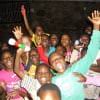














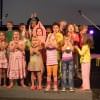









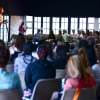










 Written by Julia Taylor
Written by Julia Taylor



